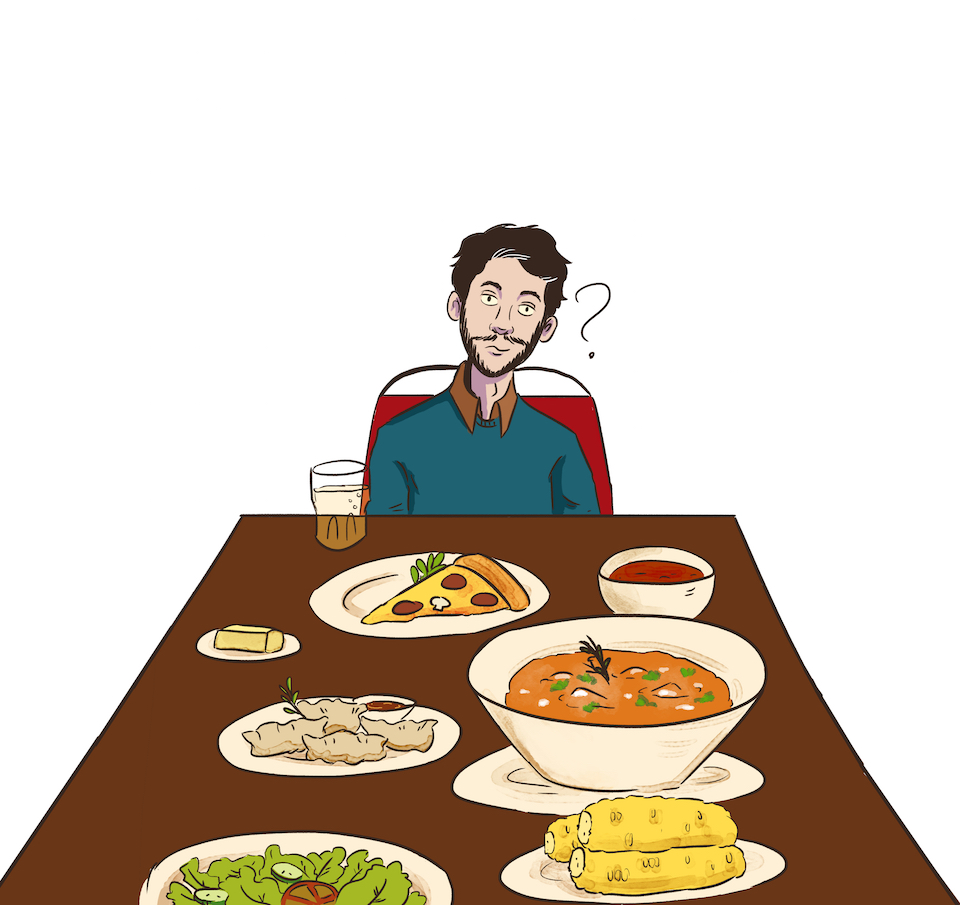Amy Pakati, food critic for The Toronto Star, recently interviewed a chef who told her “all chefs appropriate food.”
While this may come across as a shocking statement, there is an observable pattern in cities like Toronto wherein certain food creations — whether or not they are authentic — act as representatives of an entire culture’s cuisine, and become mainstream in restaurants. Is this an inevitable result of globalization? Perhaps.
I recently dined at Mother’s Dumplings, a popular Chinatown spot famous for its dough-covered delicacies. Perhaps due to the popularity of locations like Mother’s Dumplings, in this time and place, dumplings — perhaps accompanied by General Tao’s chicken — have become to Chinese cuisine what nachos and salsa are to Mexican cuisine – quintessential.
One could argue that this phenomenon has existed since cultures began interacting with one another. Now, in multicultural hubs such as Toronto, westernized versions of ‘Chinese,’ ‘Mexican,’ and ‘Indian’ cuisines, among others, are ubiquitous and often limited.
It is worth reflecting on the ways in which cultural food is appreciated today. When do food trends limit the possibility of exposure to authentic cultural food? How do restaurant owners, some of whom are immigrants themselves, interact with market dynamics to produce these quintessential items? And, perhaps most importantly, what, if anything, is lost in this process?
Whatever makes your belly grumble
There is arguably some pressure generated by advertising — like those junk food campaigns which sneak in before you watch a video on YouTube, to which many of us fall prey.
As a child I was a victim to some serious campaigning by McDonald’s, and would routinely force my parents to take me there, only to eat half the meal. Clearly I, like many other young people with impressionable minds, wanted the immediate euphoria of eating food that many of my peer group at the time agreed was a ‘must-have’. The equivalent for university students might be inexpensive restaurants which offer large portions of food are.
One of the reasons people try different cuisines is because they seek change from their everyday diet; arguably, variety has become one of those must-haves that everyone is taught to crave. Many of us opt for something familiar and accessible such as Korean or Japanese ramen. Others seek out adventurous fusion creations — something different every week.
In a city as large and as ethnically diverse as Toronto, there is no shortage of options for food enthusiasts. But when do certain cuisines stop being authentic and start to become instances of cultural appropriation?
The art of choosing
“Everybody wants a greater variety of options,” said Shana Yogan, an employee at the U of T College Street hot spot, O’Grady’s pub. This begins a cycle of supply and demand in which restaurants diversify their menu with cultural offerings; the competition also serves their own version of the same quintessential dishes.
“It becomes viral,” explained Yogan, “popular dishes — but with our twist.” The right combination between familiar and unique, according to Yogan, is the recipe for success when developing a menu aimed at variety.
Whether in restaurants that specialize in a certain cuisine, or places like O’Grady’s that try to appeal to all sorts, it is clear that stereotypes sell.
I also visited The Saj — a Mediterranean eatery also located on College Street. It strikes me that The Saj seems to present itself with a global identity while appealing to specific regional tastes. Its menu features pizzas, pastas, and wraps, all relatable western dishes served with a Mediterranean twist.
The Saj derives its name from a “hot clay hill-shaped oven” of the same name, used about 5,000 years ago to make flattened and baked bread. I’ve observed that the names of restaurants are not only chosen to represent, but also to market a certain culture; many of these are as exotic as possible while still remaining accessible. A visit to your friendly neighbourhood Ali Baba’s reveals as much.
I would argue that these practices reduce feelings of cultural ignorance for the consumer. Consumers often forget that businesses exist to give them what they want, and that by demanding the same old stuff, the pursuit of diversity is hampered.
Toronto’s taste?
One could argue that while cultural appropriation occurs in places like Toronto, spurred by the asymmetric interaction of majority and minority cultures, new cultural identities are simultaneously created. This may explain why migrants who run family-owned restaurants choose to stick with the familiar stereotypes in order to make ends meet.
There is also a case to be made by restaurant owners for tailoring food to the local palate, which may compromise authenticity, but which is necessary in a market economy in order to appeal to customers’ demands. Once individuals experience a ‘foreign’ culture through the eyes of a migrant, they may consider those experiences to be authentic, and continue to crave that particular form of cultural immersion.
On the other hand, second year Rotman Commerce student Mara Mg grew up in the Philippines, and found the various iterations of Filipino cuisine in Toronto were inauthentic, and unsatisfactory. She later realized that “the necessary ingredients for good, authentic Filipino food couldn’t be found in Canada.” From this point of view, is it even possible to achieve authentic cultural cuisine when the place from whence that cuisine originated is half way across the world? To what ends, then, should consumers and restaurateurs strive?
Powerfully yours
Google the term ‘cultural appropriation’ and you will be inundated with stories of individuals of European descent appropriating the cultural practices of individuals of non-European descent. It is clear that cultural asymmetry power plays a significant role in many human interactions. However, it is imperative that we desist from creating new stereotypes dependent on the possession of power to replace pre-existing ones, particularly in the case of something as personal as food. “Stereotyping is never good,” said Pataki. Be that as it may, it appears that some cultural appropriation is here to stay.
